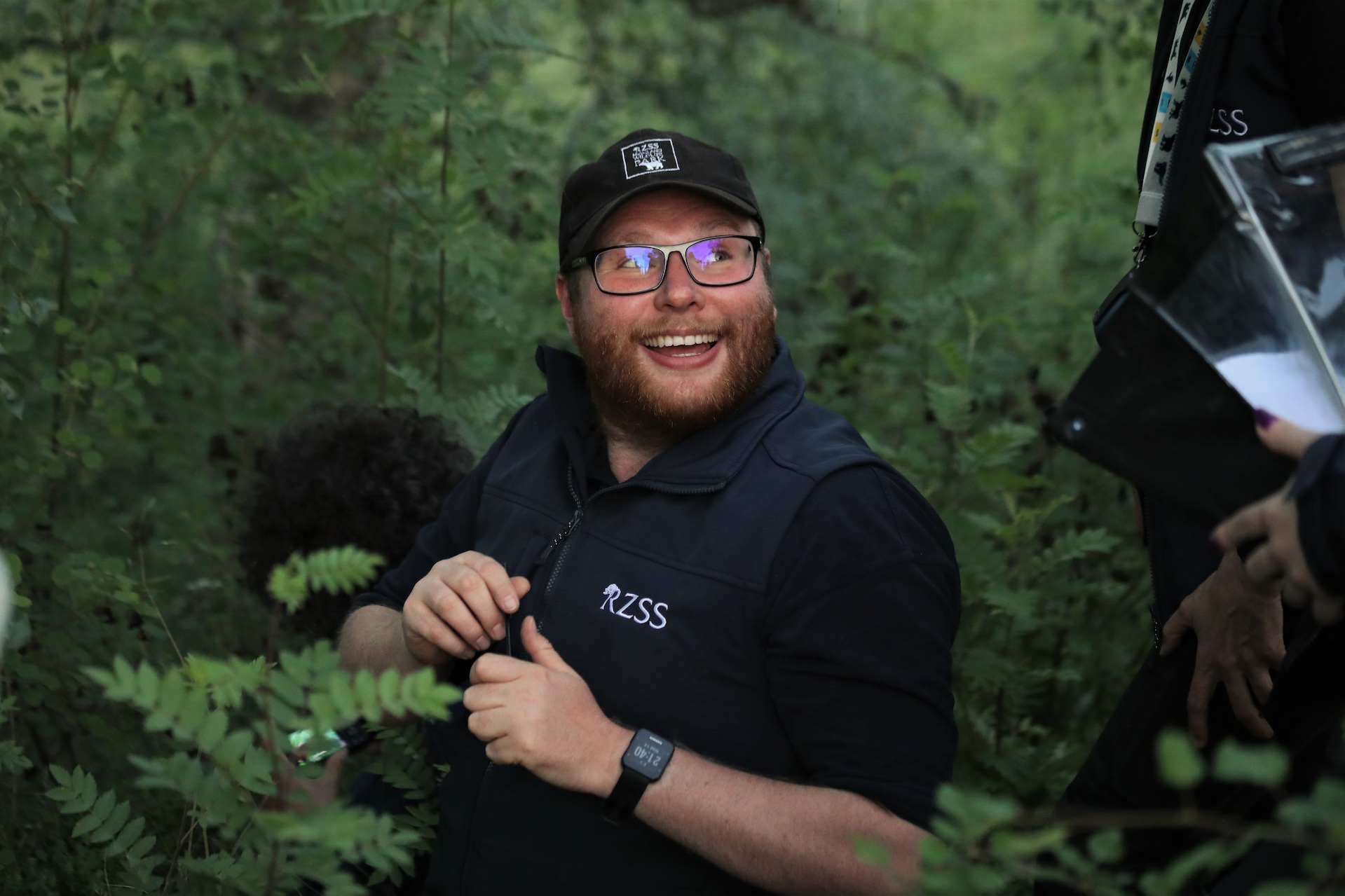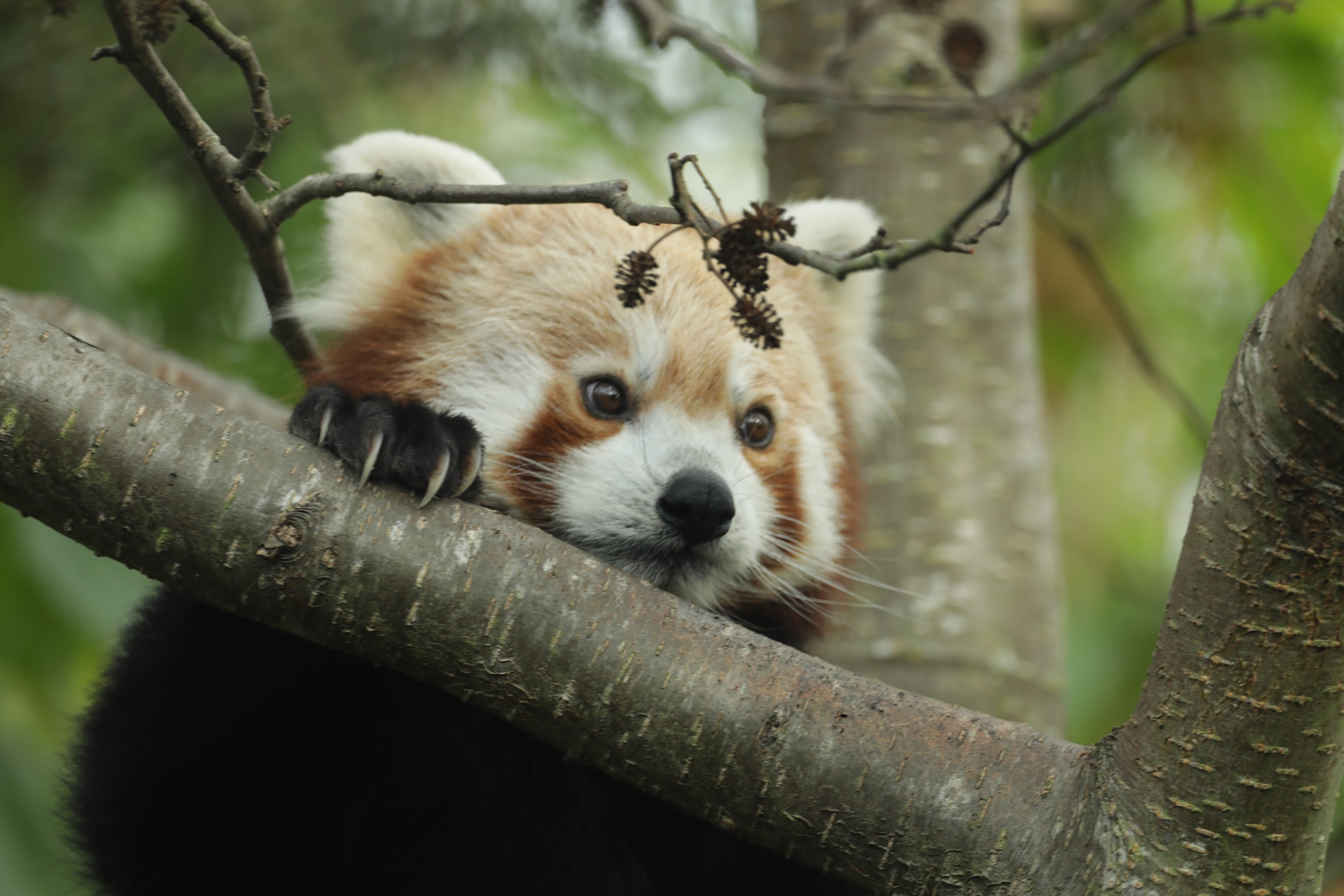Bug’s the word
Posted 29 Mar 2024

For many people the sight, or perhaps even just the thought, of bugs can be enough to make you feel a little uneasy. Invertebrates are an important part of our ecosystems but helping everyone feel the love for them can be a bit tricky.
While I have a reputation as an invert enthusiast amongst my colleagues at the Royal Zoological Society of Scotland (RZSS), I didn’t start my journey with a love for bugs. I initially studied and worked with varied animals from big to small, birds to mammals and then I ended up helping the ‘bug house’ team in one of my former roles. This opened the door to the passion I have today. I became a cover keeper for invertebrates and eventually took on a role which was entirely based in the invertebrate team at Bristol Zoo. Spending so much time with wee beasties and beginning to understand them helped me discover that their fascinating tiny world was my favourite work to do.
I had begun to work with native species more and more and when the position at RZSS came up it was an amazing opportunity for me to take the next step. The role has allowed me to continue the animal care and husbandry work which I love to do while also developing further in field conservation.
One of the very first things I did with RZSS involved getting the dark bordered beauty moth conservation breeding for release programme off the ground. For me, it’s exciting to work with species we know so little about. We have an incredible opportunity to observe and learn more about behaviours for the very first time. With the dark bordered beauty moths, what we were doing had never been done before. Starting with just a few pages of notes and research it was up to us to forge the way and I’ve spent the last few years discovering more about the life stages of moths, how to care for them in our conservation breeding facilities and how they mate and lay eggs.
Last year we began the first releases of dark bordered beauty moths into the wild. It was an incredible milestone for the project and a special moment for me, having spent so much time learning about them already. It hasn’t ended there either! We are in our third breeding season for the moths, with more releases ahead of us and plenty more to learn.
Another species I work with is the medicinal leech. Like the moths and other invertebrates, leeches might not be top of everyone’s mind when it comes to protecting wildlife. However, they can be even more greatly misunderstood or maligned given their diet of blood. You might feel squeamish at first, but this species needs our help. While we have some knowledge about them from a medical perspective thanks to their history, my team is once again leading the way to identify the best conservation management methods so we can boost their populations in the wild. When you work with them as much as I do, you can’t come away without a soft spot for them. They are fascinating animals and each one has slightly varied behaviours that you notice, almost like having their own personalities.
Invertebrates have often been overlooked but our wildlife conservation charity is working to turn the tide. Together with partners, we are already showing we can do a lot to improve their fortunes, even in just a few years. The excitement of always being able to learn more, discover and overcome new challenges and develop conservation programmes which we know are having an impact is unmatched. I hope through sharing our successes, as well as my own passion for them, one day everyone else will care for these species like I do.
Adam Button
Experienced animal keeper
This project is supported by the Scottish Government’s Nature Restoration Fund, managed by NatureScot.

